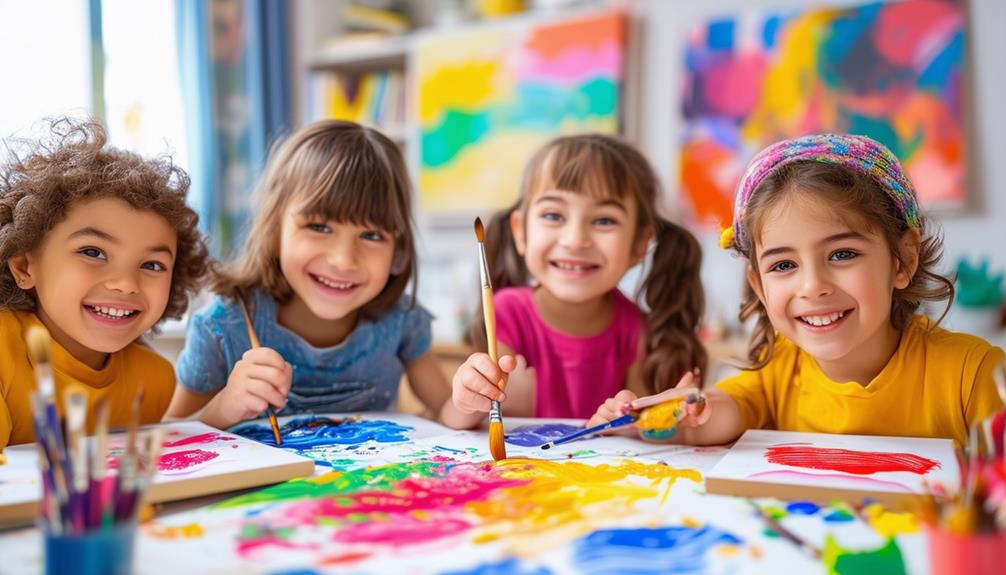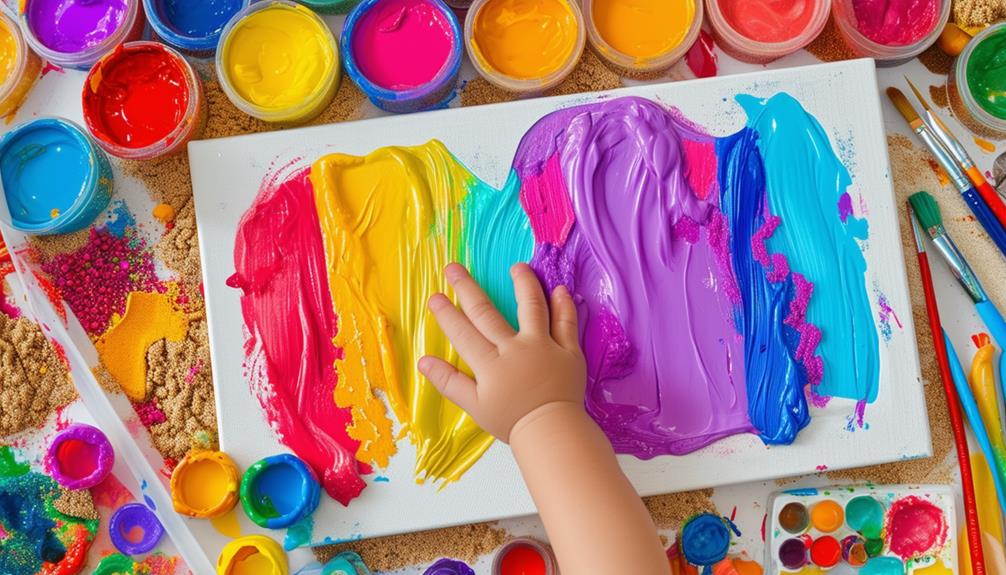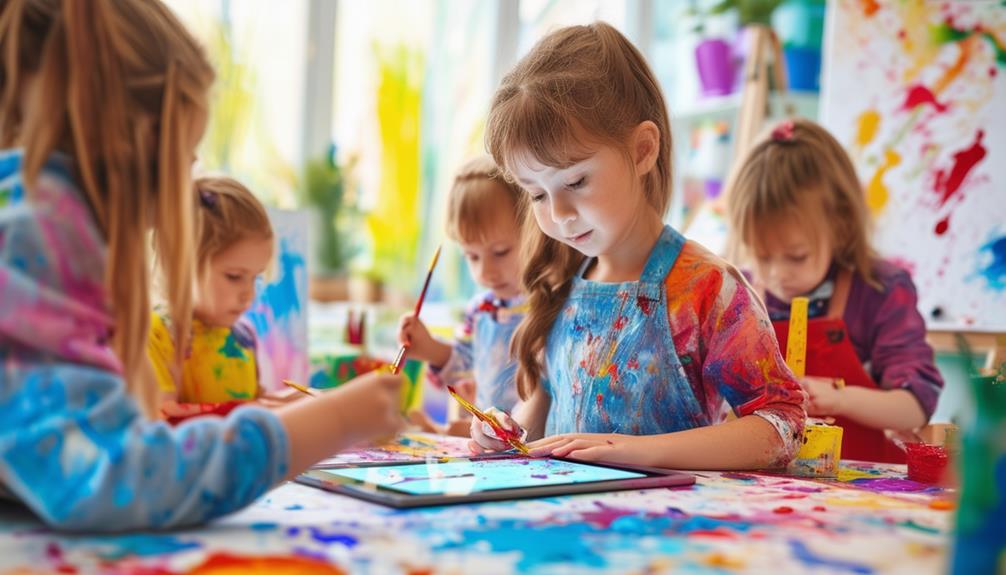Group Painting Activities for Playdates and Classrooms
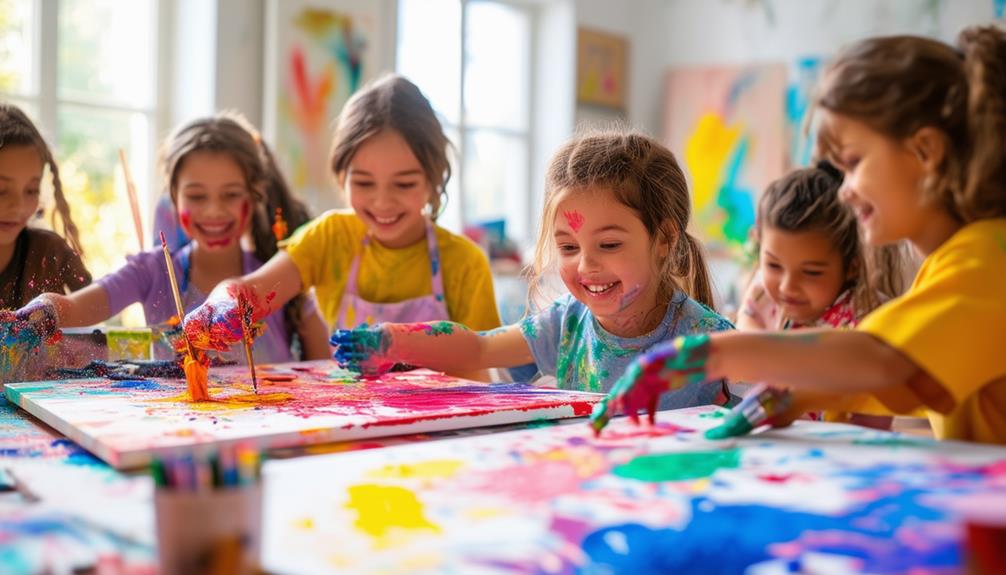
Planning group painting activities for playdates and classrooms is a fantastic way for children to express their creativity collaboratively. By setting up different painting stations with a variety of materials, you can create an engaging environment that encourages both cooperation and exploration. Clear boundaries and guidelines are essential to keep the session organized and enjoyable. Managing large groups or introducing these activities to young children can be challenging. To address these issues effectively, consider...
Understanding Process Art
Process art emphasizes the creative journey over the finished piece. When engaging in process art, the focus is on the act of creating rather than the end result. This approach encourages children to explore various materials, techniques, and their own creativity without the pressure of producing a perfect final product. Through these activities, children develop fine motor skills, enhance problem-solving abilities, and express themselves freely.
Participating in process art provides children with rich sensory experiences and opportunities to learn through experimentation. They can blend colors, explore different textures, and discover new ways to use art supplies. This kind of exploration is crucial for their development, fostering creative thinking and individuality.
In process art, there are no strict guidelines or predetermined outcomes. This freedom nurtures confidence and self-expression in children. They learn that creating art is about enjoying the process, not just achieving a specific result. Therefore, when planning group painting activities for playdates or classrooms, prioritize the experience and enjoyment of creating rather than the final artwork.
Setting Up the Painting Area
When preparing for group painting activities, it's crucial to establish a well-organized and inviting painting area. Start by covering the painting zone with butcher paper to protect surfaces and simplify clean-up. This creates a designated space where creativity can flourish without the worry of making a mess.
Next, assemble a variety of art supplies. Provide a selection of paint colors, brushes, sponges, and other painting tools to inspire creative exploration. Offering diverse options enables participants to experiment and express themselves freely. To protect clothing from inevitable splashes and spills, supply smocks or old t-shirts. This ensures everyone can focus on creating rather than worrying about their attire.
Set up multiple painting stations to accommodate different preferences and group sizes. This way, everyone has ample room to work comfortably and collaborate if desired. Additionally, incorporate a drying rack or a specified area for completed artwork. This prevents smudging and accidental damage, allowing participants to proudly display their finished pieces.
Preventing Paint Mixing
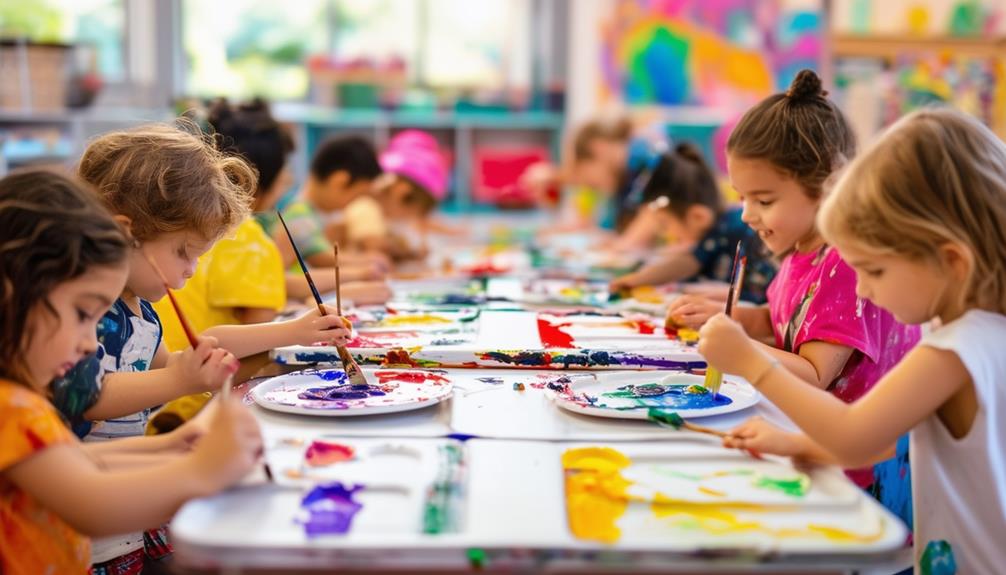
To prevent paint blending during group painting activities, provide each participant with their own set of paints and brushes. This ensures that each artwork maintains its intended color scheme and integrity. Assigning specific color palettes to each participant further minimizes the risk of accidental mixing, which is especially useful for projects requiring distinct color separations.
Using separate containers for each paint color is another effective strategy. Encourage participants to clean their brushes thoroughly between colors to avoid unwanted blending. A quick demonstration on proper brush cleaning techniques can significantly help in maintaining the vibrancy of each hue. Clear guidelines about paint handling will ensure everyone understands the importance of keeping colors separate.
Additionally, this method enhances the development of motor skills. Carefully dipping and cleaning brushes help participants refine their hand-eye coordination and control. These practices not only prevent paint blending but also enrich the overall painting experience, making it more enjoyable and educational.
Painting Tools and Materials
After confirming the integrity of your colors, let's explore the variety of painting tools and materials that can make group painting activities even more engaging. Providing a mix of traditional and unique painting tools can ignite creativity and interest among kids. For example, brushes and sponges enable different textures and brushstrokes, while unconventional tools like funnels and feathers introduce a playful element to the art activity.
Using high-quality tempera paints in a wide array of colors will guarantee vivid and captivating artwork. Encourage children to blend colors and experiment with creating new shades, nurturing their creativity and understanding of color theory. Remember to offer a range of painting surfaces such as tinfoil, butcher paper, or canvas, as each provides a distinct texture and impact.
Here's a brief guide to assist you in organizing your materials:
| Painting Tools | Painting Surfaces | Unique Materials |
|---|---|---|
| Brushes | Tinfoil | Clothespins |
| Sponges | Butcher Paper | Pom-Poms |
| Funnels | Canvas | Feathers |
| Feathers |
With these tools and materials, your group painting activity is all set to be both entertaining and informative. Use the table to ensure you have everything required for a successful and engaging art session.
Introducing Activities to Kindergarteners
When introducing painting activities to Kindergarteners, set clear expectations so they understand what to do and what's expected. Use engaging materials like sponges or tinfoil to maintain their interest and encourage creativity. This approach helps children feel excited and confident as they explore art.
Set Clear Expectations
Before starting the painting activity, clearly explain the objectives and expectations to the Kindergarteners. Introduce the art project in a fun and engaging manner, emphasizing the joy and play involved in creating something new. Use simple language and visual aids to help them understand the task. You might show them a completed example or demonstrate the steps yourself.
Encourage active participation by asking questions like, “What colors do you want to use?” or “What will you paint today?” This makes them feel involved and excited. Set clear boundaries and rules, such as where to place their brushes when not in use and how to share materials with their peers, to ensure the activity remains smooth and organized.
Highlight that creativity and exploration are key components of this activity. Let them know it's okay to make mistakes and that the goal is to have fun while expressing themselves through art. Provide guidance and encouragement throughout the session to help them stay focused and enjoy the process. Remember, the main objective is for the children to have a fun, playful experience while learning to express their creativity.
Use Engaging Materials
To captivate Kindergarteners' interest, use engaging materials like colorful paints, unique brushes, and various painting tools. Providing sensory-rich materials such as sponges, aluminum foil, and funnels creates a memorable and interactive painting experience for young learners. These materials not only make the activities fun but also stimulate their fine motor skills, crucial for their development.
Encourage exploration and creativity by offering a variety of art supplies. For example, sponge painting allows children to experience different textures and patterns, while aluminum foil art adds a shiny, tactile element to their creations. Funnels can be used to create interesting paint drips and splatters, making the process exciting and unpredictable.
Focus on developmentally appropriate projects that emphasize the joy of creating rather than the end result. This approach fosters a love for art and self-expression. Simple activities like color-themed projects help children understand color mixing and coordination in a hands-on way.
Managing Large Groups
Managing large crowds during painting activities can be challenging, but with strategic steps, you can ensure a smooth and enjoyable experience for everyone involved. Start by dividing large groups into smaller, manageable sections to guarantee individual attention and effective supervision. During group painting activities, consider using floor paper or a large canvas to accommodate multiple participants comfortably, preventing overcrowding.
Establish clear boundaries and guidelines from the start to maintain order and focus. Simple and engaging art projects work best, as they can be easily adapted for different age groups, keeping everyone interested and involved, and reducing the chances of chaos.
Encourage collaboration and teamwork among participants to promote a sense of community and shared creativity. When participants work together, they not only create a collective masterpiece but also learn valuable social skills. By following these steps, managing large groups becomes more feasible, allowing for a fun and productive painting experience for all.
Tips for Museum Settings
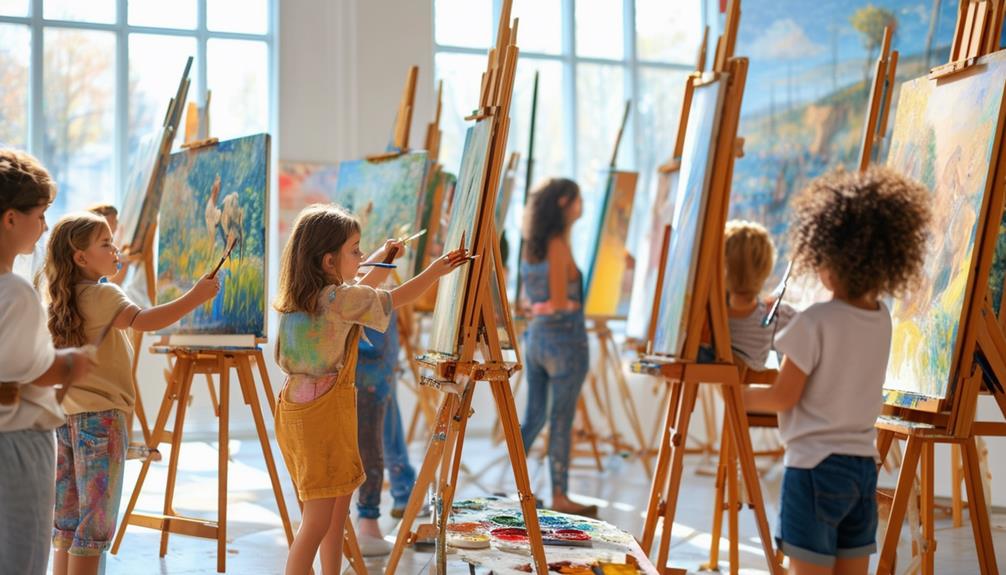
When organizing group painting activities in a museum, start by establishing clear boundaries and behavior expectations to ensure everyone stays on track. Opt for less messy materials like colored pencils or pastels to simplify cleanup. Select engaging, portable activities that require minimal setup to ensure a smooth and enjoyable experience.
Setting Boundaries Early
Establishing boundaries early in a museum setting is crucial for creating a positive and respectful art experience for children. Clear communication of rules and expectations before beginning any art activity helps manage behavior and ensures the art class runs smoothly. Emphasize the importance of respecting artwork and museum property, focusing on gentle handling and proper behavior.
Here's a concise guide to help you through the process:
| Step | Action |
|---|---|
| 1. | Clearly communicate the rules |
| 2. | Demonstrate proper behavior |
| 3. | Emphasize respect for artwork |
| 4. | Guide in gentle handling of supplies |
| 5. | Consistently reinforce boundaries |
Less Messy Materials
Choosing less messy art materials is crucial for maintaining a clean and orderly museum environment. Opting for supplies like colored pencils, markers, or pastels can significantly reduce clean-up time. These materials are less likely to cause spills and are easier to manage in a controlled setting like a museum.
Providing individual art kits to each child can help contain supplies and prevent them from scattering. Each kit can include a selection of less messy materials, minimizing the risk of shared supplies causing unintended messes.
Portable art supplies like sketchbooks or coloring sheets are excellent for museum settings. They are easy to transport and encourage children to engage in observational drawing or other quiet art activities. This focus helps maintain a calm atmosphere in the museum, allowing children to enjoy their creative process without causing disruptions.
Engaging Group Activities
To manage children's behavior effectively during group activities in a museum setting, it is crucial to set clear boundaries and expectations. This ensures a smooth and enjoyable experience for everyone involved. Here are some tips for keeping kids engaged and focused during Art Play and group activities:
- Choose Low-Mess Materials: Use colored pencils, markers, or dry erase boards to minimize cleanup and maintain the museum's pristine environment.
- Incorporate Multi-Sensory Art Activities: Engage multiple senses such as touch, sound, and even smell to keep kids interested. This sensory approach captures their attention and makes the experience more memorable.
- Provide Structured Art Projects: Offer clear instructions and structured projects to prevent disorder. Kids thrive on understanding what is expected of them, and a well-organized activity ensures they stay on task and enjoy the Art Play.
Art Play Date Ideas
When planning an art play date, you can incorporate engaging and creative activities that are both fun and educational for children. Here are some fantastic ideas:
- Spin Painting: Using a salad spinner, children can create unique and mesmerizing artwork by watching colors swirl and mix. This activity is simple to set up and always a hit with kids.
- Raised Salt Painting: This activity involves painting over lines of glue sprinkled with salt. As children apply vibrant colors, the salt absorbs the paint, creating an exciting texture and a sensory-rich experience. It's a great way to introduce new materials and techniques.
- Marble Painting: By dipping marbles in paint and rolling them across a canvas or paper, children can create captivating patterns. This dynamic activity helps them learn about movement and the effects of kinetic energy in art.
- Drawing Prompts with Eye Stickers: Place eye stickers on a blank sheet and let the kids draw characters or creatures around them. This activity encourages creativity and storytelling, sparking their imagination.
- Shaving Cream Marbling: Swirling different colors into shaving cream and then transferring the marbled patterns onto paper offers a sensory-rich experience. The resulting artwork is beautiful and tactile, making it a delightful activity for children.
These activities not only provide a fun and engaging art play date but also help children explore different artistic techniques and sensory experiences.
Booking and Pricing Information
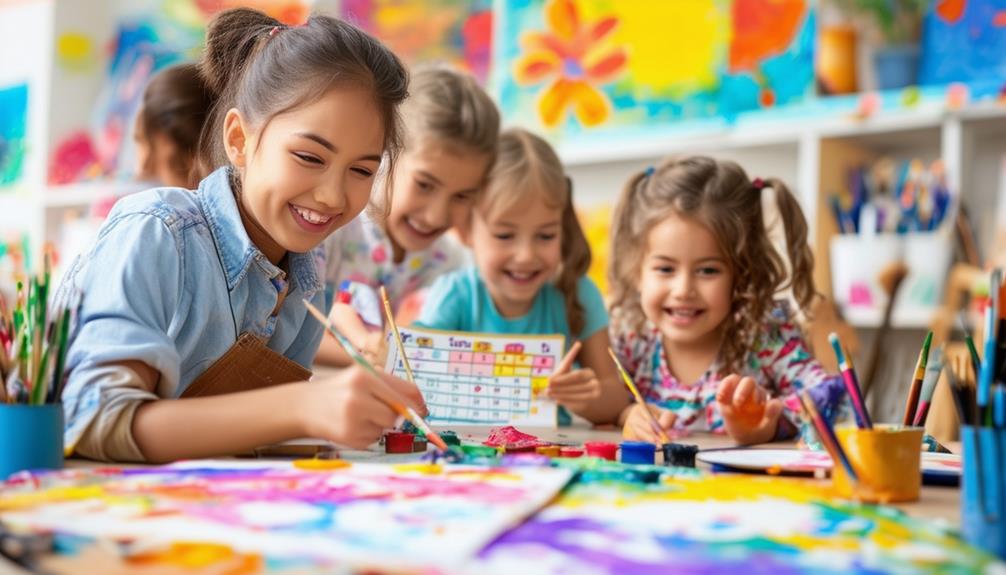
To plan your group's creative adventure, let's review the booking and pricing details. The booking process is straightforward and ensures your event is tailored to your needs. Here's how it works:
- Confirm Group Size: Costs vary based on group size and the selected art project. On average, expect to pay around $25 per participant, with a minimum charge of $50 for events typically lasting 60-90 minutes.
- Choose a Project: We offer a variety of art projects suitable for different age groups and preferences. Whether it's a simple painting activity for young kids or a more complex project for older participants, you'll find customizable options to match your group's interests.
- Finalize Pricing Details: After selecting your project, confirm the pricing based on your group size and specific choices. Our customer support team is available to assist with any inquiries, bookings, and event planning.
This streamlined approach ensures a personalized and enjoyable creative experience for your group.

